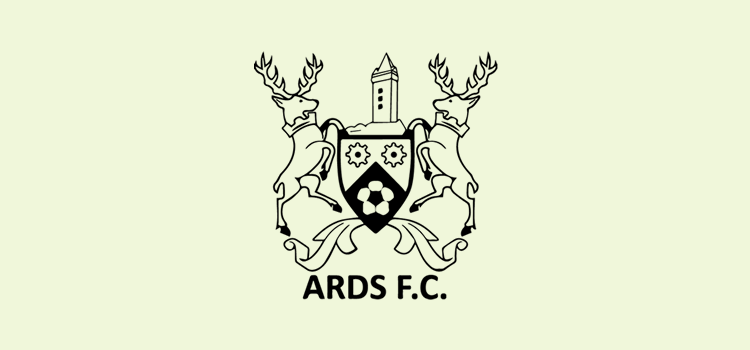Ards were formed in 1900 by workers in a local factory and began playing matches on a piece of land which now is part of Newtownards Airport. After being formed, Ards initially played in the amateur leagues until the First World War in 1914, when local football was cancelled.
Upon the war ending and football resuming Ards began to grow and develop rapidly, culminating in being elected to the senior Irish League in 1923. In the same year, Castlereagh Park was leased by the club and was opened by Viscount Castlereagh on 18 August 1923.
Ards played their first senior match away to Barn United in Carrickfergus on 25 August 1923. This also gave Ards their first ever victory as a senior club with a 2-1 win. This was soon followed up by the team’s first senior home match, which finished in a 1-0 triumph against Newry Town. The season would see Ards end up in 9th place in the ten team division with 14 points from a possible 36 with five wins and four draws.
The side continued to improve until the 1926/27 season, which many supporters believed would see the club win the league. Despite a strong start to the season, Ards failed to meet these expectations and finished 5th with 25 points out of a possible 44, a full 15 points behind eventual champions Belfast Celtic. The club found more success, however, in the Irish Cup, ending the season as champions with a 3-2 win over North Belfast side Cliftonville. Among that team was Ireland international Andy Bothwell who made five international appearances before his death in 1928 at the age of just 27.
Over the next ten years, Ards continued to be inconsistent and, despite reaching a few Cup finals, had to apply for re-election to the League after finishing bottom in the 1935/36 season. The team from North Down was also struggling financially and but for a donation of £3,000 from local businessmen, may have folded. The outbreak of the Second World War brought an end to senior football for its duration. Ards, however, continued playing as an intermediate team during this period, winning two minor trophies.
Once senior football resumed after the war, Ards began trying to regain entry to the Irish League. It took until 1947 to eventually raise enough funds to rejoin the league. A year later, the club faced English opposition for the first time when Luton Town visited Castlereagh Park. The match ended in a historic 2-1 victory for the home side.
Over the next few seasons, Ards continued as an average team, finishing as high as sixth and as low as second bottom. The team did, however, produce some good players, including then club top scorer Norman Case, several of whom earned transfers to England. In 1952 Ards reached the final of the Irish Cup for the second time and continued their 100% record in Irish Cup finals, this time with a 1-0 victory over league Champions Glentoran at Windsor Park, in front of a crowd of 15,000 to 20,000. The team returned to Newtownards that evening for an open-topped bus tour of the town, observed by huge crowds.
Following that season, Ards made their best signing in manager George Eastham, who brought with him his son, also called George, who would go on to become an Ards legend and earn many caps for England. In 1953 another marquee signing was made in the form of Billy Humphries from Glentoran, who, along with the two Eastham’s, started to improve the Ards side and finished third in the 1956/57 season.
The clubs dreams were realised the following season, winning the league after a closely fought battle with Glenavon from Lurgan. Ards finished the season with 36 points and a record of won 16, drawn 4 and lost 2. Their reward was a European Cup draw against Stade de Reims of France, whose squad included French legend, Just Fontaine.
Despite conceding four goals in the first leg, all scored by Fontaine, Ards became the first ever Irish League side to score a European Cup goal, losing the match, held at Windsor Park, 1-4. Before the second leg, Leeds United purchased Billy Humphries who made his first move to mainland Britain. The second leg was lost 6-2 resulting in Stade de Reims winning 10-3 on aggregate.
After seven years at the club Eastham left to manage Accrington Stanley, he would, however, return in 1964, with Ards struggling. Around this time, Ards started unearthing talented players, especially from the youth team, with Ray Mowat, Billy McAvoy, Ronnie McAteer and Davy McCoy all progressing to the senior team. Ards purchased Castlereagh Park for £1,100 in 1966.
Ards gradually improved as the above players, along with Billy Nixon, signed from Shrewsbury, began to gel leading to Ards reaching their third Irish Cup final in 1969, resulting in a 4-1 victory after extra time for the side from North Down against Distillery. All four goals that day were scored by Billy McAvoy, who with 301 goals for the club remains top scorer. This result meant Ards would be competing in Europe for the second time in their history, this time against AS Roma. Ards earned many plaudits holding the Italian side to a 0-0 draw at home in the first leg before losing 3-1 in the Stadio Olimpico.
